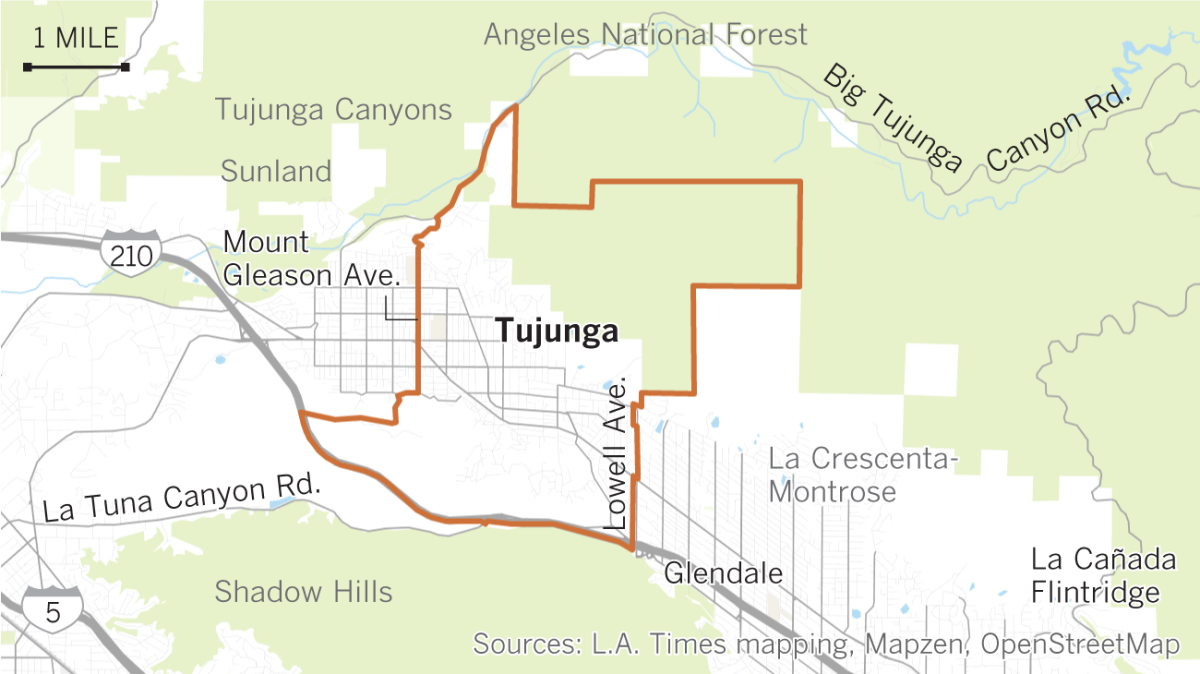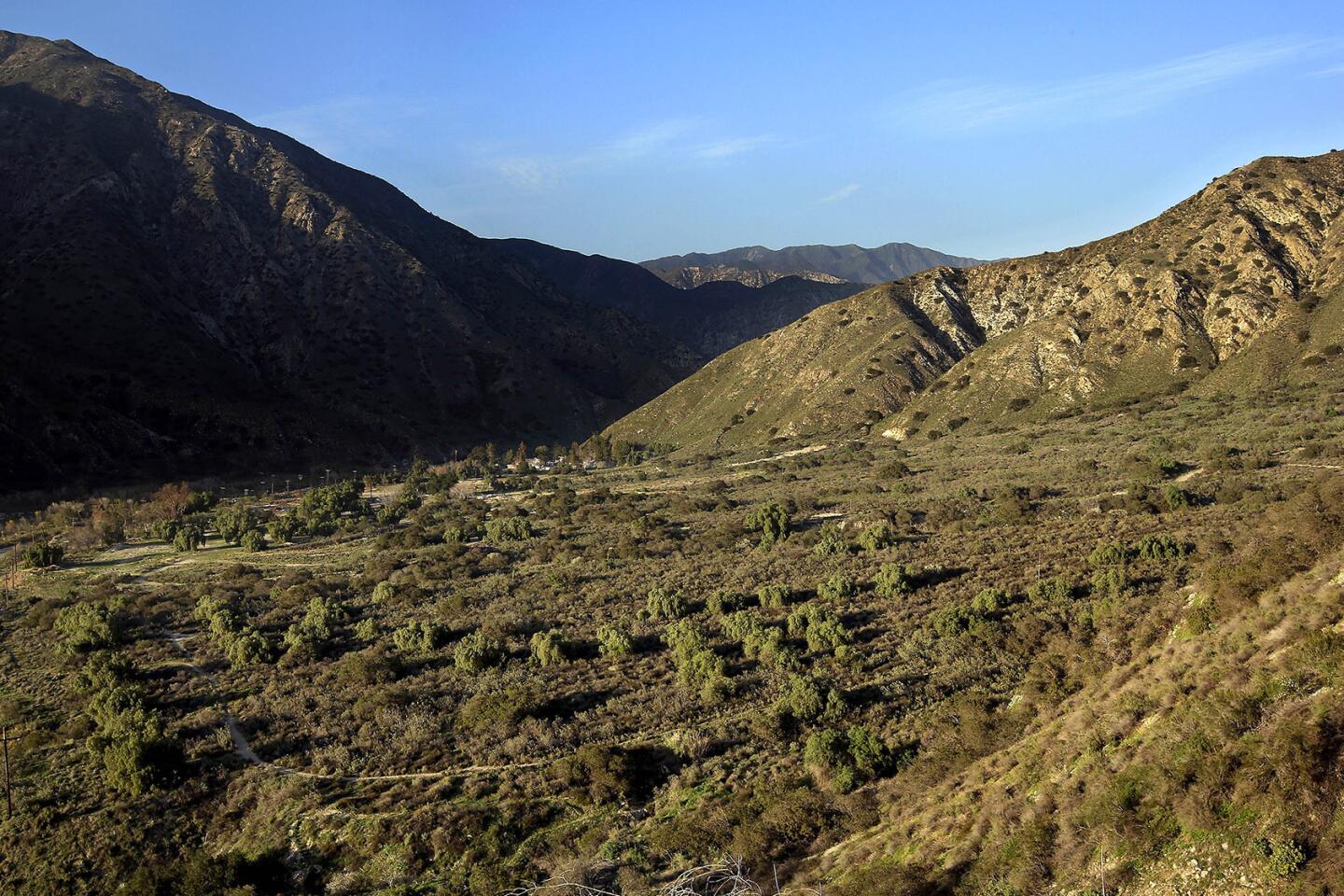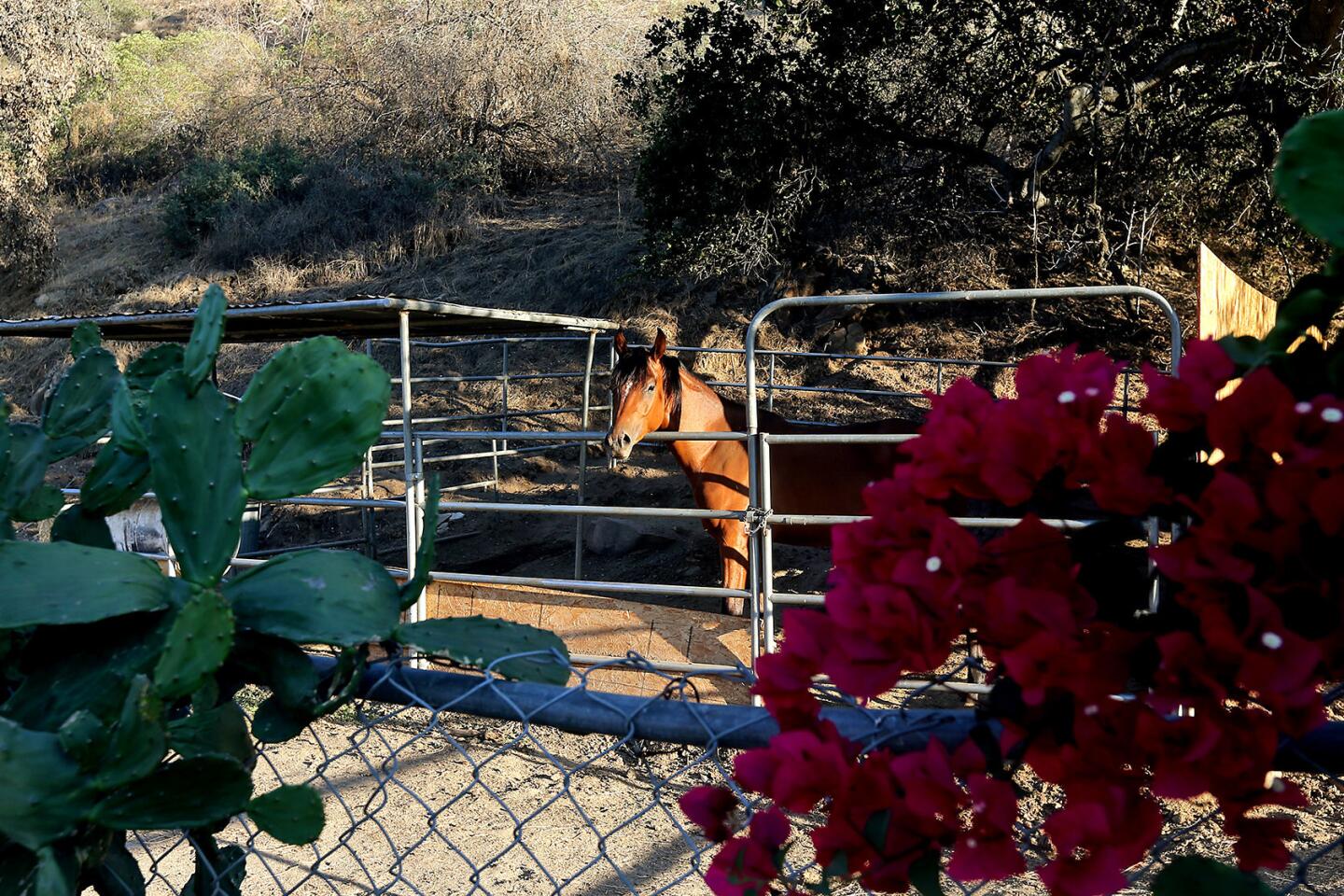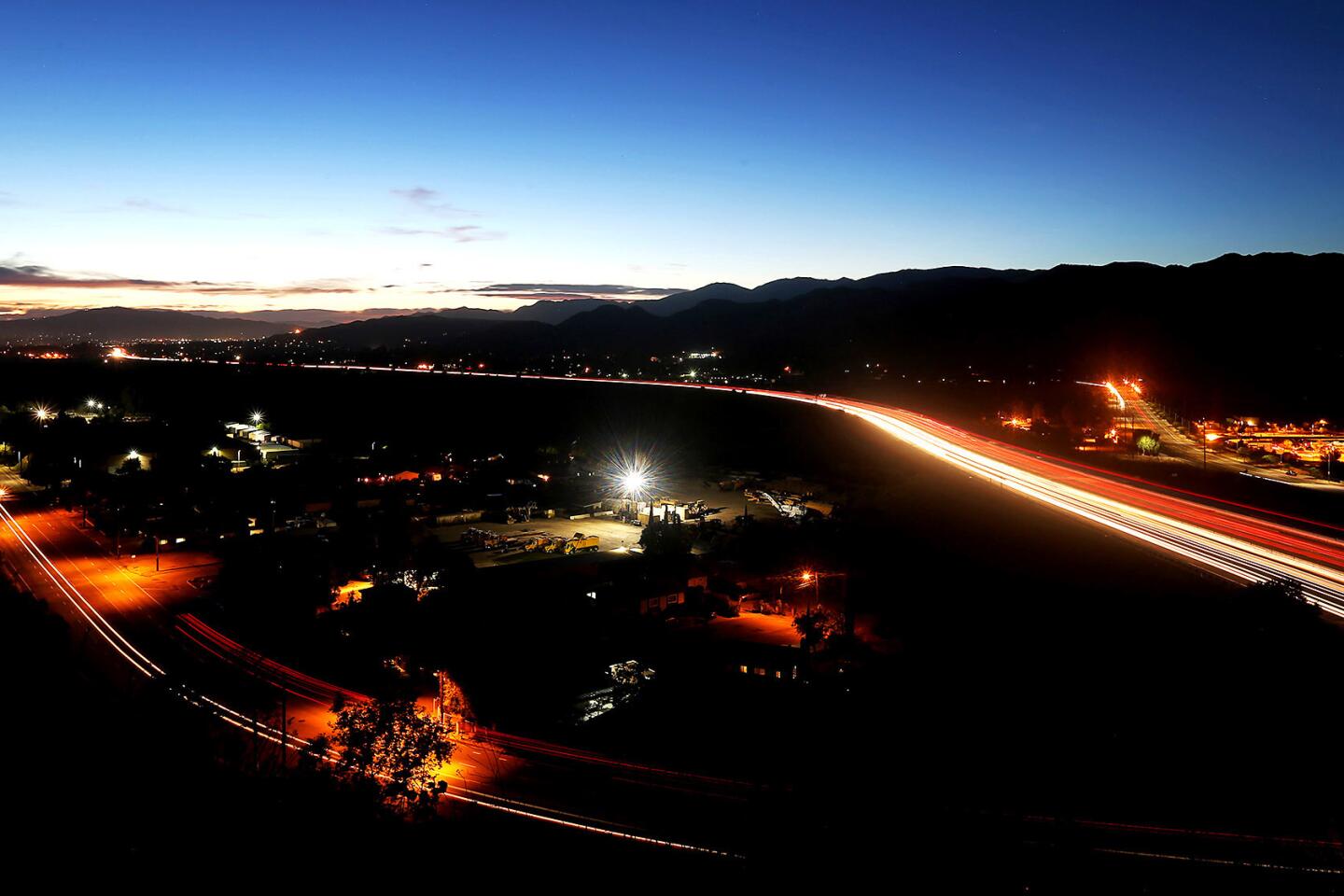Neighborhood Spotlight: Tujunga hangs on to its rustic edge
- Share via
The name Tujunga is derived from the Tongva term for “old woman of the earth,” so it’s no surprise that the character of the area from the Spanish conquest to the opening of the 210 Freeway was predominantly one of pastoral rusticity.
Originally part of the 6,600-acre Rancho Tujunga — a gift from the Mexican governor to Francisco Lopez, who famously discovered gold in Placerita Canyon after dreaming of its location while napping under an oak tree — Tujunga was one of the communities created as the rancho was eventually broken up and sold to various real estate investors and ranchers.
Aside from a brief gold rush of its own in 1865, Tujunga developed as an agricultural community where farmers raised everything from fruit trees to honeybees. Throughout the 19th century and the early 20th century, the rhythm of life in the Tujunga Valley followed that of the seasons: planting, harvesting and planting again.
That simple, slow-paced rhythm inspired journalist William Ellsworth Smythe to plan a utopian commune in Tujunga. As the founder of the “Little Land” movement (slogan: “A Little Land and a Lot of Living”) which had already established self-supporting farming communities in Idaho and down south in San Ysidro, Smythe was eager to continue his success in Tujunga.
In 1913, he began offering potential buyers excursions from Los Angeles to the 240-acre Los Terrenitos tract that would form the heart of the community.
Early settlers in the colony used the rocks they cleared from their fields to build Bolton Hall, a gathering place for the commune that still stands at the corner of Commerce Avenue and Valmont Street in the old town center of Tujunga.
Like many communes, Los Terrenitos had a brief period of brilliant success followed by a slow but steady decline, as achieving the dream of being entirely self-supporting ran headlong into the capitalistic impulses that, in the go-go land boom of the 1920s, led many community members to subdivide their farms to make way for lucrative residential developments.
Even so, the character of Tujunga remained overwhelmingly rural until L.A.’s postwar housing boom, which brought a dramatic increase in the construction of subdivisions and commercial corridors.
The opening of the Foothill Freeway in the late 1970s made Tujunga a popular bedroom community for workers who commuted to downtown Los Angeles, but vestiges of its rural past remain in its equine neighborhoods and general disdain for dense development.

Neighborhood highlights
A flair for the rustic: Tujunga’s relative isolation has made it a retreat for everyone from urban equine enthusiasts to iconoclastic poets and biker gangsters.
A sense of history: The influence of the Little Landers is still felt in Tujunga in the independent spirit of the people who live there and in the landmarks they left behind.
In the shadow of the mountains: The San Gabriels loom over Tujunga and provide plentiful recreational opportunities, including hiking, camping and hunting.
Neighborhood challenge
On the fringe of the wilderness: Of course, that proximity to nature is a double-edged sword, as the recent wildfires have shown.
Expert insight
Sally Hall of Berkshire Hathaway HomeServices has lived in Tujunga for 45 years and sold homes in the area since 1985.
She noted that residents in the area are staying put, which is leading to overcrowding and a competitive market.
“If you want to build anything, you have to tear down a house,” Hall said. “If you want to buy something, every home is going to have multiple offers.”
She said McGroarty Park provides a consistent stream of art, dance and pottery classes that attract a younger demographic and provide a vibrancy to the historic community.
“Neighborhood gathering places like the Elks Lodge and American Legion help foster a sense of community,” Hall said.
Market snapshot
In the 91040 ZIP Code, based on 20 sales, the median sales price in July for single-family homes was $679,000, according to CoreLogic. That’s a 25.3% increase in median sales price year over year.
Report card
There are three public schools within the Tujunga boundaries. Apperson Street Elementary and Sunland Elementary scored 874 and 843, respectively, in the 2013 Academic Performance Index. Mt. Gleason Middle scored 808.
Outside the boundaries, Plainview Avenue Elementary scored 793, and Verdugo Hills Senior High scored 746.
Times staff writer Jack Flemming contributed to this report.
MORE FROM HOT PROPERTY
Trump advisor Carla Sands seeks $18 million for her oceanfront Malibu mansion
Former NBA player Landry Fields parts with ocean-view house in Manhattan Beach
OneRepublic’s Ryan Tedder flips Beverly Hills home to Cindy Crawford for $11.6 million
More to Read
Sign up for Essential California
The most important California stories and recommendations in your inbox every morning.
You may occasionally receive promotional content from the Los Angeles Times.









